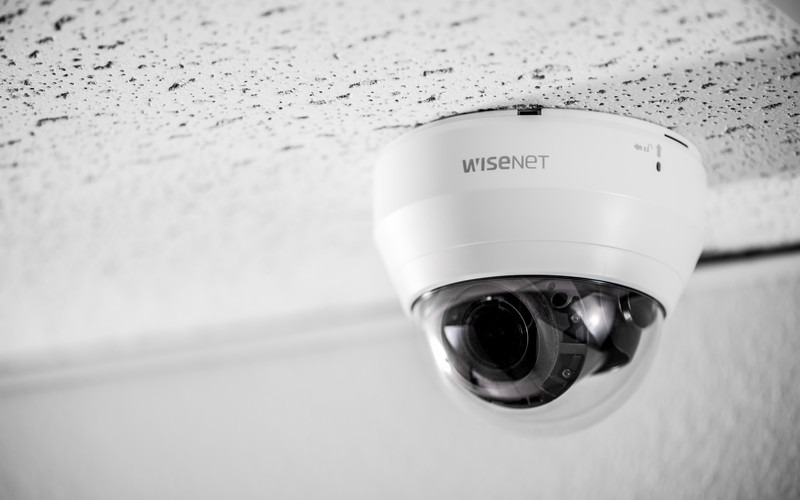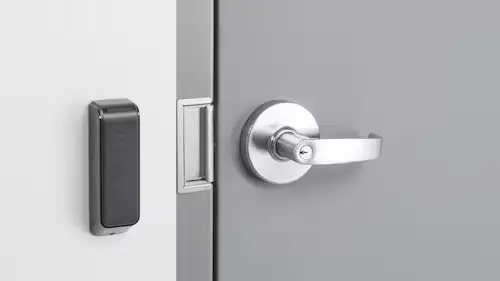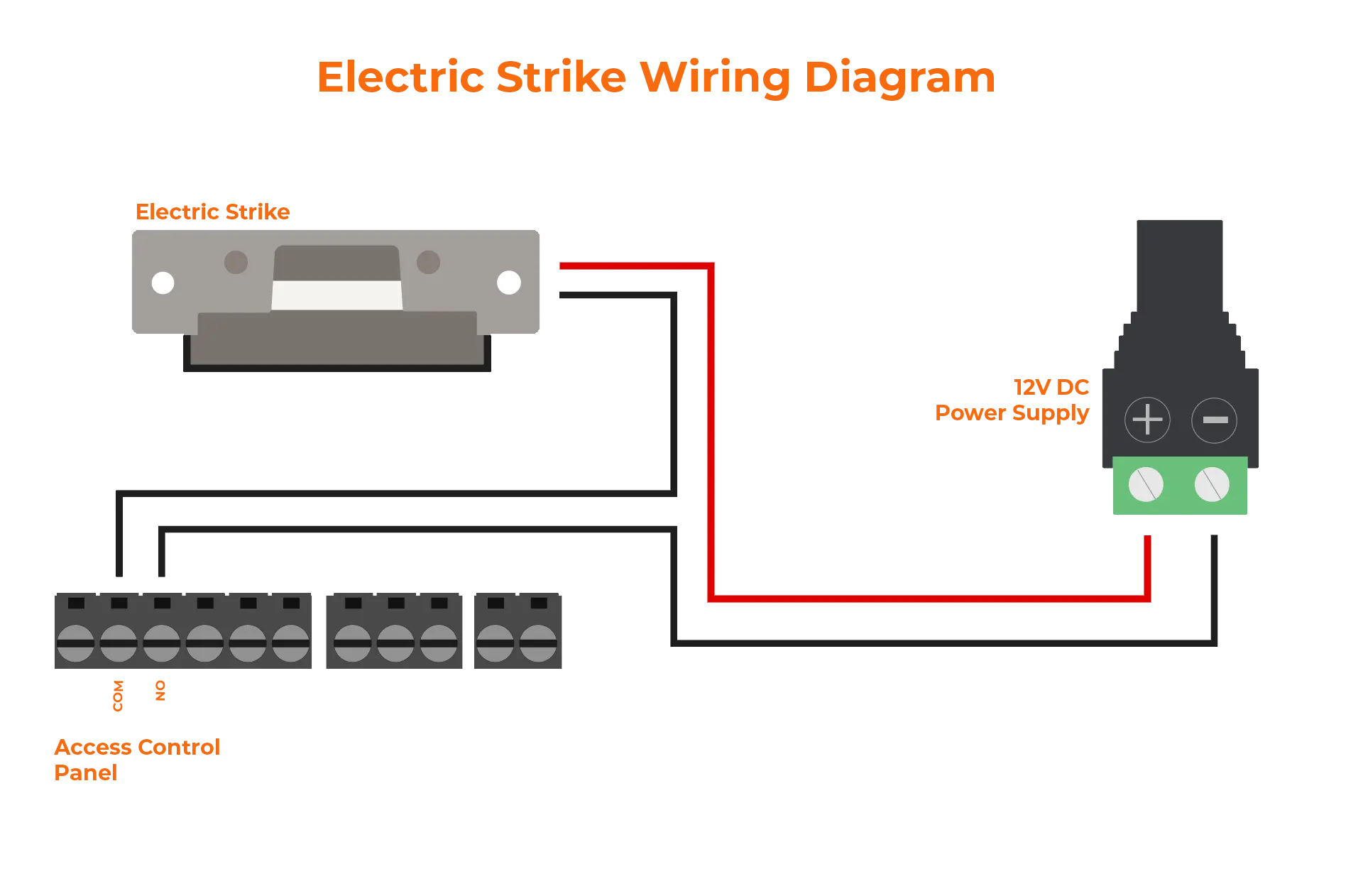How to Install an Electric Strike lock for commercial doors
Find out how to set up an Electric Strike lock for a business.
An electronic lock is an excellent option for anyone wishing to update from standard lock-and-key access procedures. They offer a lot more versatile solution and are more dependable and scalable than conventional techniques. They may also be connected with contemporary access control. We’ll explore electric strike locks in this post, one of the most common types available.
For a broader introduction to the topic, check out our guide on electric locks.
Commercial security cameras for business
- Business security cameras with enhanced coverage and IR that improve situational awareness
- Video analytics with AI to find incidents
- Hours of video are easily sorted through by Video Search to locate a suspicious person or vehicle.
- Integrates with third-party ONVIF® compliant platforms

How does an electric strike lock work?
The technology underlying an electric strike lock will be discussed in this section, along with installation instructions.


What are the “moving parts” of an electric strike?
Electric strikes are similar to regular strike locks in that they are comprised of a strike that blocks the door latch. It’s installed at the level of a door handle, and is by far the most common electric lock you’ll find on metal or wooden doors. The main difference between it and a traditional strike door is that, as the name suggests, it’s electrified, and can be unlocked with electrical impulses. The impulse will also move the strike rather than the lock latch itself, as a key would do.
Fail-Safe or Fail-Secure Hybrid
One of the cool aspects of an electric strike lock is that it can be either fail-safe or fail-secure, depending on how you set it up. A fail-safe lock is unlocked when the power to it is cut, whereas a fail-secure lock is locked when power is out, and unlocked when it is fed power. In an electric strike, given that the moving parts are relatively simple and versatile, you can wire it so that the lock is either activated or deactivated based on whether it’s currently powered or not.
Because of this, it is the best lock for every door that it can be fitted on (not a glass door, as it needs to be in the frame). If wired in fail-safe mode, it can serve as an emergency evacuation route and is easy to install.
How to install Electric Strike?
Electric strike locks, as previously indicated, are quite simple to install because they often merely replace an existing strike lock. If not, you will need to drill it in and cut out the mold from the wall. We have a useful video of an installation of a typical electric strike here if you need more detailed installation instructions. In order to reach a power source, you will also need to run wire through the walls. Start your search for the right lock for your environment with the HES industrial electric strike.
How can I test Electric Strike?
You should test any electronics you put in your room to ensure they work properly before declaring the installation complete. With a lock this basic, all that is required is connecting the wires, turning it on, and providing the strike with the appropriate voltage (this varies based on the model, which is usually specified). It should activate at this point, and you’ll audibly hear a “click.”
You may also think about testing a few unlocks under “severe” conditions, such as pulling the door open or forcing it open without unlocking it first. Even though you might be apprehensive to pick your brand-new lock, it’s always preferable to learn these things now, when the installer is still on site, rather than later, when you’ll have to handle the problem on your own!
Regardless of the access control system you are connecting the lock to, you should additionally test the connection. You should also check your smart access control system, since having that is the sole circumstance in which an electric strike lock would be preferable to an analog one. This article will go into further detail later.
What else should I look out for during the install?
In addition to appropriate installation, you need to be aware of any compliance difficulties with your new electric strike lock. This is often not an access control issue because fire safety laws primarily call for you to always be able to evacuate the building in an emergency, but it’s still worth pausing to consider. City and building type affect the codes that apply. There are a lot of similarities, and We provide a helpful guide to assist you in determining what you require for your area.
Similar to fire safety, if an electric strike lock is put on a front door or the main exit from the building (assuming it is configured in a fail-safe manner), there should still be a mechanism to activate the lock in the event of a power outage. You don’t want just anyone to be able to enter your place, even if the lock will remain open! A manual key override would be a good choice to consider in this situation; you should talk about it with your security installer.
How is an electric strike unlocked using an access control system?
We’ll provide a brief description of how electric strike locks interact with the most recent IP access control readers in this section.

Electric Strike Wiring
The majority of simple electric strikes don’t have wireless capabilities (by design), therefore in addition to wiring your lock to a power source, you also need to hook it to the access control controller or reader. When triggered by an electrical impulse, the electric strike will either lock or unlock, and the access reader will control these electrical impulses.
The basic wiring for an access control system with an electric lock is shown in the diagram above. While the magnetic lock in the diagram is an electric strike, the idea is the same. After receiving the access credentials from the reader and sending them to the controller for verification, which is completed when they are accepted, the controller instructs the power supply to either turn on or turn off the lock’s power, which unlocks the door.
Unlocking
If you choose a contemporary IP access control system, unlocking may be done via a mobile device or, if you like them, access cards. With the wiring detailed here, you touch your phone or access card on the reader to present your credentials, and the authentication procedure will start.
The reader will now transmit the Bluetooth or NFC signal from your phone to the controller through a Bluetooth or WiFi signal in the background. As stated in the preceding section, if the controller properly authenticates the signal, a signal will be sent to the lock power supply to either activate or turn off energy to the lock, thereby freeing it temporarily.
How is an electric strike unlocked using an access control system?
Electric strike locks are a basic and reliable piece of hardware for anybody looking to get their feet wet with modern electronic access control. With a configurable fail-safe or fail-secure mechanism, they’re suitable for many different scenarios, and can easily be wired to any modern readers or controllers for a fully future-proof access solution.






